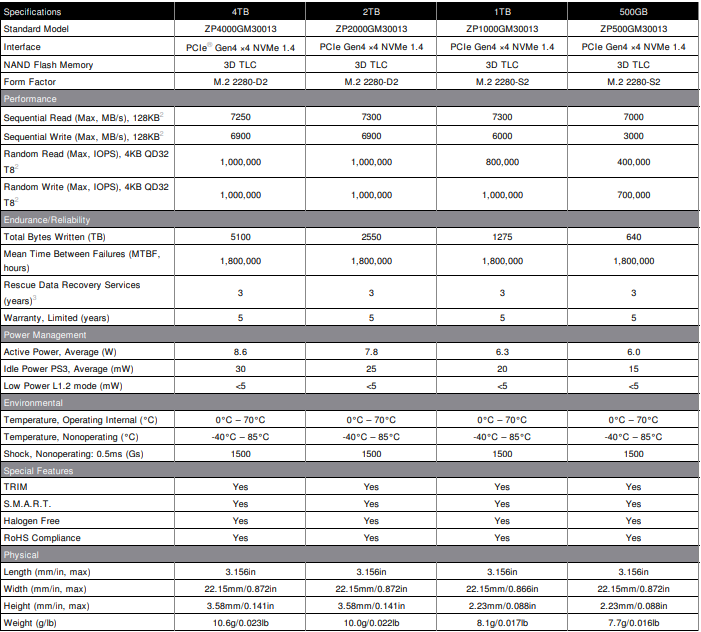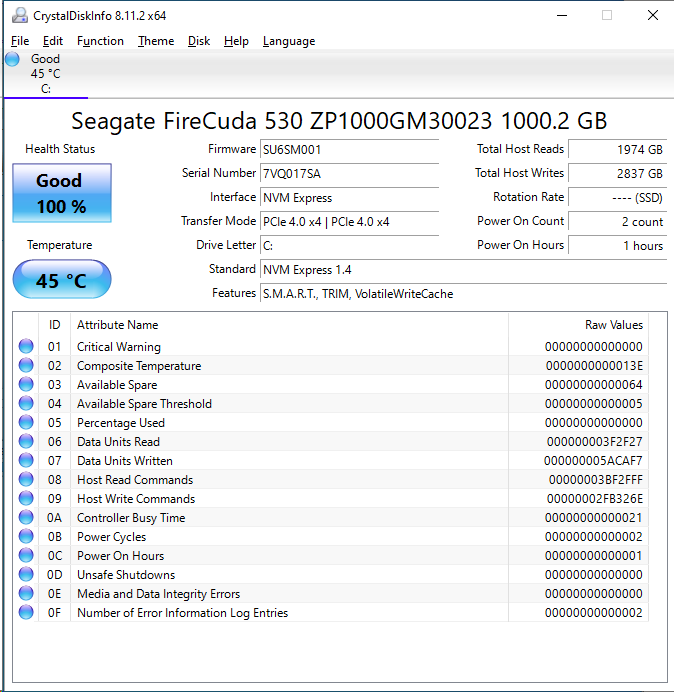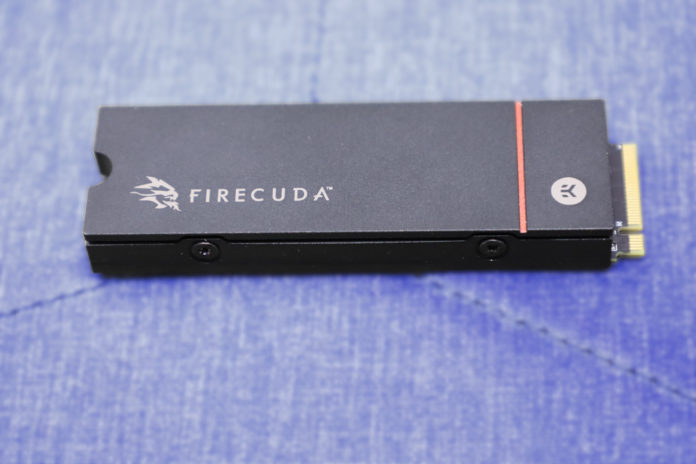Today we are taking a look at the Seagate FireCuda 530 1TB NVMe SSD. Previously we reviewed the FireCuda 520, which is the immediate predecessor to this drive and was part of the initial wave of PCIe 4.0 SSDs. The FireCuda 530 represents Seagate’s premium entry into the second generation of PCIe 4.0 drives, featuring the Phison PS5018-E18 controller and TLC NAND. Drives based on the PS5018-E18 have performed very well in our previous testing, so expectations are high for this drive!
Seagate FireCuda 530 1TB NVMe SSD
The Seagate FireCuda 530 1TB comes in a single-sided M.2 2280 (80mm) form factor. Our test model came with an integrated heatsink, though the FireCuda 530 is also available without one.

Though the style is different, the form-factor for the FireCuda 530 with the integrated heatsink is similar to the Gigabyte AORUS 7000s we previously tested. This similarity is not an accident, as both drives are marketed as being compatible with the restrictive requirements to operate in a Sony PlayStation 5. I have made a habit of complaining about SSDs with non-removable heatsinks, and while I am still not happy with the FireCuda’s design it is at least moderately easier to remove than say the WD Black SN850‘s design. For the FireCuda 530, the top of the heatsink pops off quite easily but the drive is very securely taped or epoxied to the bottom half. While I suspect removal is physically possible, it remains a challenge, and buyers with motherboard-integrated heatsinks should purchase the non-heatsink model of the 530.
Beneath that heatsink is the Phison PS5018-E18 controller, 176-layer Micron TLC NAND, and a DRAM cache. This combination of components is fairly top-tier, which sets my performance expectations quite high.

The rear of the heatsink has product labeling, and the rear of the drive holds no electrical components.
Seagate FireCuda 530 Specs
The Seagate FireCuda 530 line of SSDs come in at capacities between 500GB and 4TB.

Our 1TB test model is actually on the lower end of the spec sheet for once. Still, rated performance is quite good at 7300 MB/s sequential read and 6000 MB/s sequential write. Rated endurance on this drive is great at 1275 TBW, which is closing in on double the rated endurance for competitive drives like the WD Black SN850, Sabrent Rocket 4 Plus, Samsung 980 Pro, and XPG Gammix S70. Seagate also includes a 5-year warranty with this drive, along with the added bonus of a 3-year data rescue service plan. Essentially everything on this spec sheet is good, and it speaks to the confidence Seagate has in this drive.

CrystalDiskInfo can give us some basic information about the SSD, and confirms we are operating at PCIe 4.0 x4 speeds using NVMe 1.4.
Test System Configuration
We are using the following configuration for this test:
- Motherboard: ASUS PRIME X570-P
- CPU: AMD Ryzen 9 5900X (12C/24T)
- RAM: 2x 16GB DDR4-3200 UDIMMs
Our testing uses the Seagate FireCuda 530 1TB as the boot drive for the system, installed in the M.2_1 slot on the motherboard. The drive is filled to 85% capacity with data and then some is deleted, leaving around 60% used space on the volume.
Next, we are going to get into our performance testing.





I have the WD SN850 in a couple of computers, I noticed that the sequential performance deteriorated quite a lot over time. The drive now delivers less than 1600MB/s sequential read (tested with dd in linux)
Frankly, I am more impressed by the 4k Q1T1 performance. This thing delivers more than 21,000 tps in the worst case scenario!
Thanks Will for testing sustained performance!! And congratulations to Seagate, seems the hype is justified!
Echoing Steven: thanks for testing sustained write!
Weak article not at the level we expect from STH.
Benchmarking a Storage is much more complex than just run few doubtfull software and show some ridiculous windows task manager screenshot.
Running a full spectrum of disk test while you generate a controlled “noise” in the system is the way to go. Then you need to filter the results with some statistics math tool and filtering to remove uncontrolled noise on the system . No existing “commercial” benchmark doit properly.
Real case scenario must be simulated with a bit of knowledge and not just pressing start button on a benchmarking suite.
I really hope you do a more serious test when you deploy hight performance big network storage than the one you showed here.
They’re doing something different controlling noise with something that isn’t a commercial benchmark.
Diogene da Samo you just read that online and tried to copy/ paste but failed. Maybe you’re a bot and that would make more sense with your reply.
Where are Corsair models?
I’d like to see the Corsair MP600 Pro, maybe Pro XT comparison included.
I have 2 x Corsair MP 510 currently, will be upgrading MB very soon so I’m trying to decide on 2 x PCIE 4.0 M.2 drives to replace my boot and games drive.
I’ve narrowed it to either Seagate FireCuda 530 or Corsair MP600 Pro. The 530 claims tiny increase in read/write speeds whereas MP600 Pro claims up 1,200,000 IOPS vs 1,000,000 for 530.
I’m already leaning towards 530 because of higher TBW. I have decades of experience with Seagate storage drives and consider them most reliable.
Hey everyone nice forum :)
The real drive this competes with is the Samsung 980 pro, as these other drives are not in the same class. Seems like the 980 pro still has the edge on latency but the 530 has endurance and burst speed. This reflects Samsung poor choices for the 980pro so assuming a stronger competitor will be launched soon
May I ask what system you used to test this on? And what cache settings on Windows? I get half the 4k random 32Q1T speeds as you.